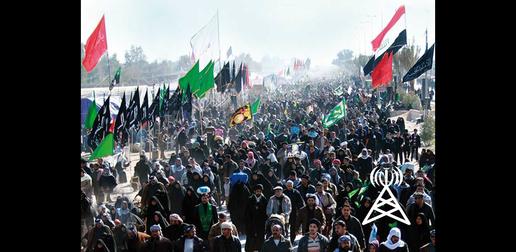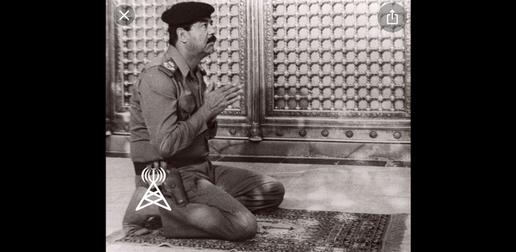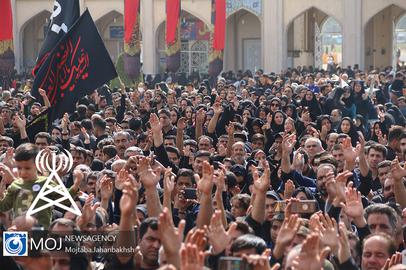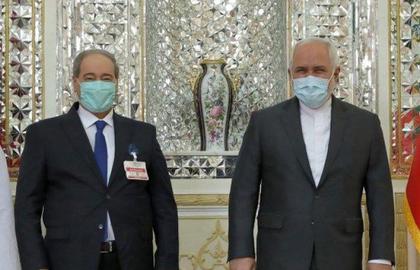The history of the propaganda apparatus of the Islamic Republic is as long as that of the republic itself. Its output was intensified during the Iran-Iraq war in an effort to mobilize the public to play its part in fighting the war, and its expansion has been consistent over the years.
Many media outlets in the Islamic Republic are tools for propaganda, so driven by ideology that they cannot be considered to be media in the proper or normal sense.
In this series, IranWire will study the propaganda apparatus of the Islamic Republic, from satellite channels to Friday prayer pulpits to the so-called "educational and research" institutions like Al-Mustafa Al-Alamiyah International University, which have both domestic and international functions and use missionaries and “training experts” to deliver their messages.
The first article looks at the Imam Khomeini Educational and Research Institute headed by Mohammad Taghi Mesbah Yazdi.
The second article details how Friday prayer services in Iran, which were not an organized phenomenon before the 1979 Islamic Revolution, are controlled by the state and used to amplify pro-regime messaging.
The third article examines the Al-Mustafa Al-Alamiyah Society, which is also referred to as the Mustafa International University, and its remit to spread Islamic Republic-style Islam around the globe.
The fourth article explores how non-clerical actors and institutions have aligned the Islamic Republic to Mahdism: the Shia belief in the imminent return of a messianic "savior".
This article looks at the Arbaeen March and the Islamic Republic’s abuse of a religious rite for political purposes.
***
When the Ba'athist regime in Iraq was in power, it banned Shia religious rites, including the important Arbaeen march. It was revived immediately after the fall of Saddam Hussein in 2003, and a large number of Shias attended the rite in the first year it was allowed to go ahead.
This spontaneous, widely-attended event surprised many people, including President George W. Bush, who helped overthrow Saddam Hussein. The huge crowds surprised the United States government, but also alarmed and frightened US forces in charge of overseeing Iraq during its transition to a new government. They were confronted with an emerging phenomenon that they identified as potentially causing enormous damage if it conflicted with American interests.
Arbaeen means 40 or fortieth in Arabic. The Arbaeen march, a long-standing tradition among Iraqi Shias, is a mourning ritual that commemorates the 40th day of the martyrdom of the third Shia Imam, and takes place on the 20th day of the Safar Arabic month. In this ritual, mourning Shias from all over the country go to Karbala, setting off five days before Arbaeen, mainly traveling by foot, but also in groups of caravans.
The mourning procession lasts five days, ending on noon on Arbaeen day. To give an example of the large scale of the procession, the march attracted about 7,000 people in 2015.
Arbaeen Economics
The number of Iranian pilgrims taking part in Arbaeen ceremonies increased from 40,000 to 2.2 million between 2010 and 2016. This figure increased to more than 3 million in 2017.
Due to the large participation of Iranians in the ceremonies, events that require extensive facilities and preparations, cooperation between the two countries has increased over the years, resulting what some refer to as "Arbaeen Economy". The Arbaeen rituals generate revenue for Iraq, bolstered by the capital that Iran and Iranians inject.
Iranian officials have stated this broad cooperation is an important model of neighborhood policy in the West Asian region and indicates great potential for political, economic, and security cooperation based on spirituality, common culture and solid international relations.
Despite all the efforts put into the ritual of the Arbaeen march, the exact monetary figures needed to facilitate all aspects of this cooperation have never been provided by the Islamic Republic authorities. Statistics have also never been provided with regard to how much revenue this huge investment has generated for Iran. If it is a unilateral investment, why is it only Iraq that benefits from such investment? Why not other countries? Is this huge investment about more than the celebration of a religious rite?
The Arbaeen March: Displaying Iran’s Power
As the revival of the religious rite of Arbaeen in Iraq became continued on an annual basis, it gradually grew in size, becoming a much larger event. Since 2003, Iranians joined Iraqi Shias, but so did Shia Muslims from around the world, including from Kuwait, Pakistan, Afghanistan, Azerbaijan, Lebanon, Turkey, Bahrain, Yemen, and dozens of other countries, all traveling to Iraq each year to participate in the event.
Therefore, the Arbaeen pilgrimage is considered to be the largest gathering of Muslims and one of the largest religious gatherings in the world, with Hajj in Saudi Arabia being the largest. Apart from Iraqi pilgrims, it is said that in some years the number of pilgrims from other countries has reached millions. Of this number, approximately 3.3 million are Iranian pilgrims.
The revival of this Shia tradition among Iraqi Shias is not surprising, nor is the fact that Iranians participate. What is surprising, however, is that as Iran's influence in Iraq intensified, Iran’s extensive involvement and Iranians’ participation in the event has become a top priority in Tehran.
In other words, just as Iran prepares and organizes Iranian presence during the Hajj season, it also prepares and organizes the participation of Iranians in the Arbaeen procession, facilitating their travel, and incurring huge expenses for its preparation.
In 2016, Tehran and Baghdad established the Political and Consular Coordination Committee to define policies and plans for the Arbaeen ceremony. In 2019, the committee ruled that visas for citizens of the two countries would be free, and then later that same year, the two countries agreed on the abolition of visas.
Also, due to millions of foreign pilgrims traveling to Iraq in a short period of time, Iran helped launch programs to develop transport infrastructure, health, basic goods supply, mobile communication lines and crossings at border points (mainly Sumar, Chazabeh and Shalamcheh in Khuzestan Province, Mehran in Ilam Province, and Khosravi border in Kermanshah Province). So why bear this heavy cost and all this procurement?
The answer is that the Islamic Republic's commitment to the Arbaeen ritual and active participation in it is more than religious devotion. It is about the strategic development of a key strand in the Islamic Republic of Iran’s propaganda machine.
The Arbaeen March and the Propaganda Machine
There is no doubt that the Islamic Republic's investment in Arbaeen is rooted in religious beliefs. But it has to be seen within another context, and from another angle, as well.
Iran's active participation in Arbaeen should be considered as comparable to its active participation in Hajj. The Islamic Republic considers Hajj a political event and uses it as part of its propaganda machine in the Islamic world, and it uses the Arbaeen ceremony in the same way.
Due to the lack of infrastructure in Iraq, hosting millions of pilgrims is potentially very problematic. Tehran became well aware that, given the long-standing religious commonalities and the long common border between the two countries reaching a length of 1458 km, absolutely no other country can play the role that Iran plays in Iraq.
It was not without reason that Ghasem Soleimani, the former commander of the Revolutionary Guards Quds Force, described the Arbaeen as the 20-million manoeuver, a reference to the number of people who take part. In recent years, the municipality of Tehran, through its allocation of a budget of 15 billion tomans [$600,000], including sending 330 staff and cleaners to Najaf and 500 people to Karbala, undertook the task of cleaning these two cities at its own expense. The municipality of Tehran called the effort “Shia and Islamic authority in the Arbaeen International Congregation."
In the second paragraph of Note "D" of the Budget Law of 2019, 40 Arbaeen pilgrims were "exempted from paying exit taxes,” the fee acquired by the government for every person who travels outside the country. Considering that the ground travel exit tolls in 2019 were 12,500 tomans person, if we assume that the Iranian pilgrims are three million people, the government of the Islamic Republic has waived an amount of 37.5 billion tomans [$1,500,000] in exit taxes.
In addition, other institutions including the Red Crescent, the Foundation of the Oppressed, Imam Khomeini Relief Committee, Astan-e Quds Razavi, Execution of Imam Khomeini's Order, municipalities, among other organizations, spend money to ensure Iranians are present in the ceremony.
It is obvious that Iran’s logistical provision for such a crowded event in a country that does not have the necessary infrastructure imposes a heavy cost on Iran and requires important planning. However, this heavy provision and expense is not only for the establishment of a religious rite, but also for political exploitation in line with the goals of the Islamic Republic.
By taking over the logistics and sending more than three million Iranian pilgrims to the country, the Islamic Republic aims to promote the idea that Iraq is under its influence. Such an impression will have an impact on its conflicts with Washington, and also position itself at the center of the Shia world.
Although Najaf in Iraq is generally considered the geographical and spiritual center of this Shia world, the Islamic Republic has shown it is determined to take on this role. This is evident in several of its initiatives, including the the Shia Congress and the Arbaeen Maneuver, another name for the Arbaeen March.
Read other articles in this series:
The Imam Khomeini Educational Institute
visit the accountability section
In this section of Iran Wire, you can contact the officials and launch your campaign for various problems



























comments